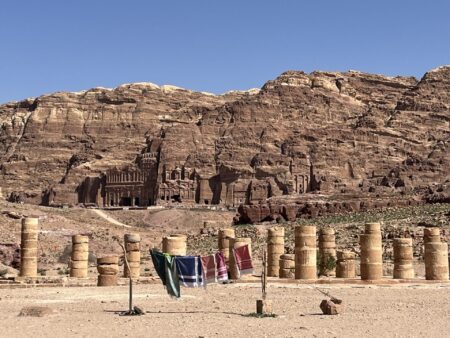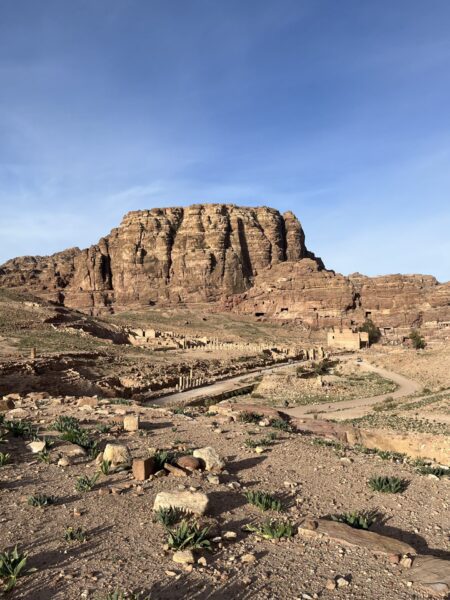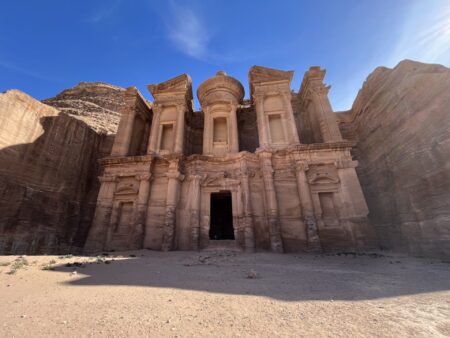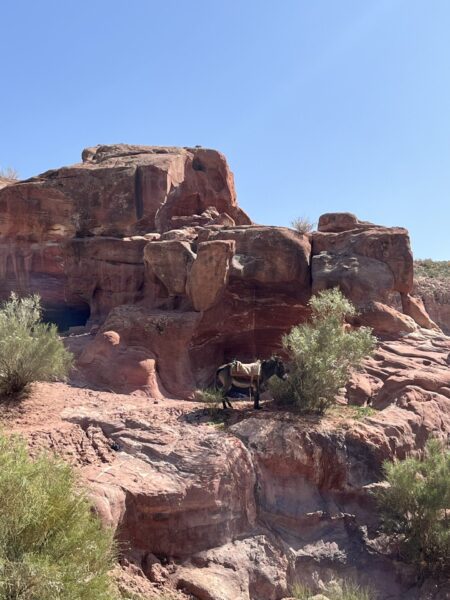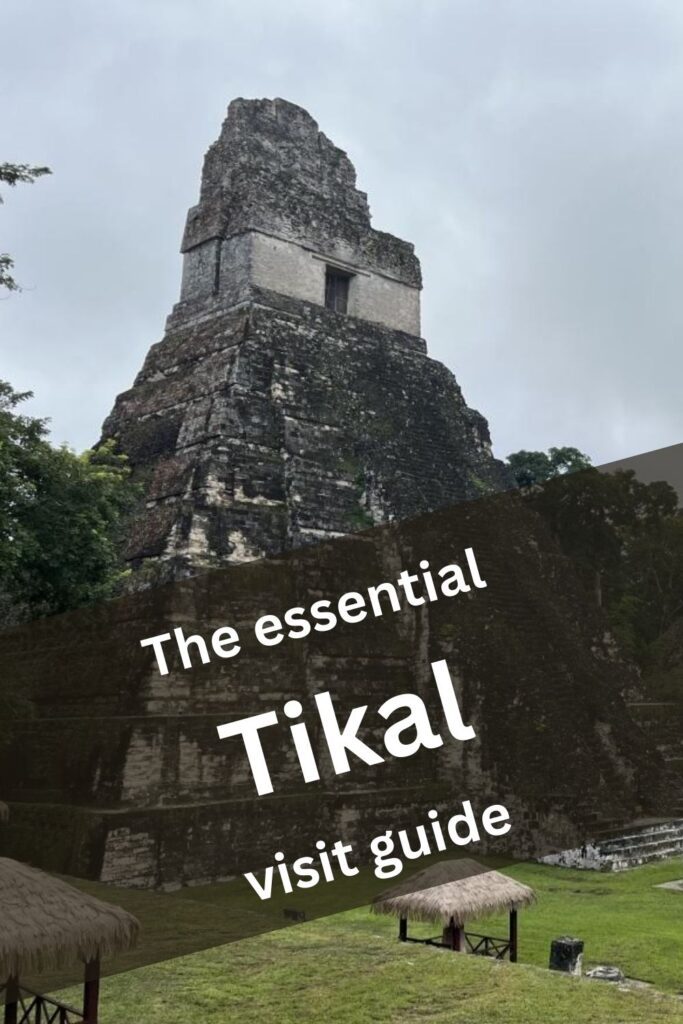The ancient “rose city” of Petra is one of the new seven wonders of the world and has been a Unesco world heritage site since 1985. It is also known as the “Lost City” since it was only rediscovered in 1812, despite being built in the 3rd century BCE.
Known as Raqmu in ancient times and by its constructors – the Nabatean civilization, the archaeological site is the most important tourist attraction in the Hashemite Kingdom of Jordan and is widely considered one of the most important ancient cities in the world.
Its unique atmosphere and architecture, with its monuments carved in the layered pink rock canyons, make it a sight to behold.
Here you will find all the most important information on how to get the most out of your visit to Petra, and some tips from my experience (spoiler alert: visit in the early morning).
For more information, check out these articles on my visit to Petra, and the Jordan Road Trip
Prices
Entrance Tickets
Ticket prices encourage one to stay multiple days to visit the ancient city, as can be seen from the table breakdown below.
| # of Days | Price |
| 1 Day | 50 JD |
| 2 Days | 55 JD |
| 3 Days | 60 JD |
Jordan Pass
Buying the Jordan Pass is highly recommended since it includes access to practically all major sightseeing attractions in Jordan, such as the Amman citadel or the Wadi Rum desert, as well as clearly the entrance to Petra. It also includes the cost of the Visa on arrival required for most countries when entering Jordan. The Jordan Pass needs to be purchased before arriving in the country and is a simple and quick process. More information can be found here on the official website: https://jordanpass.jo/
There are three packages, all basically the same, with the exception of how many days in Petra they offer.
| Package Name | # of Days | Price |
| Jordan Wanderer | 1 day | 70 JD |
| Jordan Explorer | 2 consecutive days | 75 JD |
| Jordan Expert | 3 consecutive days | 80 JD |
The Site
At more than 260 km2, the entire complex is immense, and structures are abundantly spread apart to make visiting the site a journey in itself.

The two most popular attractions are the iconic Treasury (Al-Khazneh) and the Monastery (Ad-Deir). The two monuments stand on opposite sides of the park, and both of them demand a rather long walking journey from their visitors.
Next, the east walls of the mountain are dotted with many tombs, making this area known as the Street of Facades. All these can be climbed and offer a great view of the entire site and of the theater below.
A large open road opens up, the Colonnaded Street, and traverses the central area of the park, with notable monuments such as the remains of the Great Temple and the Nymphaeum. On this stretch of road, there are notably fewer shops and street vendors, as it is also on open land with no rock formations that can shelter from the sun or wind.
At the end of the long road is the start of the climb to the Monastery. The path is made by around 850 steps (although I did count them because apparently I have nothing better to do, or OCD, not really sure, and arrived at 737). It can be quite a hike.
The Monastery is similar in architecture to the Treasury but larger and with a larger plaza, making it a nice place to sit and relax in the cafe in front of it and admire it while bathing in the sun.
All in all, this route is 3.5 km from the Treasury (+ the 2 km to reach the Treasury), so the entire path will take at least 2 hours if one simply races through.
From the main entrance at the visitor center, the Treasury is found at the end of the Siq, the long, winding road within the natural canyon. The path is wonderful in itself, with the smooth, rose-tinted rock only slightly letting the sun’s rays through. To reach the gorge though, a long dirt road must be traversed, which can be done on a horse on the side path or by cart. The entire walk is around 2 km, so it is already a pretty long stretch before the Treasury opens up in all its glory to visitors at the end of the gorge.
Best time to visit
Season
The best seasons to visit Petra are spring and autumn. The temperature is cooler, and the sun is more forgiving.
Opening hours
The site is open from 6 AM to 4 PM.
Petra in the morning
I couldn’t recommend enough to visit the Lost City as early as possible.
Going early to visit any major tourist attraction is sort of obvious, but there are some sights that are more prone to be “ruined” when a lot of crowds are present.
I already mentioned this in my post on the Mayan city of Tikal in the Guatemalan jungle, but some places benefit more from the total absence of crowds and being visited in the morning. What I mean is that, without considering the photo aspect of sightseeing, places such as the Taj Mahal or the Great Pyramid of Giza remain what they are, with or without crowds. Certainly more enjoyable if they appear to be all for themselves but remain fundamentally the same.
On the other hand, walking in the Guatemalan jungle surrounded by the morning dew, the howling monkeys, birds, and rodents that will later hide during the day, and being surrounded by these still, ancient structures protruding from the morning mist gives a completely different experience. It may make for worse pictures without the sun completely illuminating and drying out the humidity, but the experience is manyfold better.
Petra is also one of those places that radically changes if visited in the morning. Despite the whole site being very large and dispersed, the major attractions, i.e., the Treasury, the Monastery, the Siq, and the tombs on the Facade Street, are all in enclosed spaces. The Treasury, for example, is a sight to behold when it is seen between the winding, narrow pathway of the gorge leading up to it. But the plaza in front of it is small and enclosed within the canyon. It gets very crowded fast, and the tall surrounding rocks just help echo the noise of all the people.
On the other hand, in the morning, there are very few people (in part due to the cold); the shopkeepers and street vendors are not even opening up their shops, and the few that are present will not even bother you as they haven’t started working yet, and most are boiling their teas and coffees. The donkeys, horses, and dromedaries, which during the day race through the streets, are all grazing or resting. The cats are hunting mice or resting in the most scenic possible places before the tourists arrive. The dogs are just trotting around. You can hear the birds chirping from all the small alcoves in the rocks. Lighting is also unique, as the rising sun is slowly peaking from behind the mountains, partially illuminating some structures. It is the very definition of the phrase “silence is golden”.
Petra by Day
Obviously, most people visit during the day, and this is the standard way to see Petra. The sun illuminates all monuments, the donkeys, camels, and horses are in full work, shopkeepers, cafes, and restaurants try to entice visitors into their stalls, dogs sleep in the shade, and cats are petted by everyone.
Petra by Night
Another thing that I highly recommend is doing the “Petra by Night” visit. It is only available on Mondays, Wednesdays, and Thursdays and lasts about 2 hours, starting at 8 p.m. The scenery is incredible, as the Treasury Plaza is “littered” (not the right choice of words here) with candles, giving a somber atmosphere to the experience. The visitors are encouraged to experience the atmosphere in silence, and they usually respect the quiet experience.
Entrances & Getting around
There are three entrances to Petra.
- The main classic entrance is the one discussed above, from the Siq to the Treasury, through the Street of Facades, across the Great Temple, towards the Monastery, and back.
- The side entrance is a great way to explore the site if doing a 2-day visit, as it passes by other structures and leads directly to the center of the site. The path is definitely less scenic than the primary one as it is through a concrete road but is also much less traversed (basically nobody uses it), allowing for quiet exploration of the rock formations and some smaller stone-carved monuments.
- Arguably the best route is through the rear entrance, which entails a hike (or camel ride) from “Little Petra” and will lead you to the monastery, which is usually the last monument seen when entering from the front entrance. It also has the advantage of avoiding the long upward climb to the monastery and leaving the iconic Treasury as a grand finale.
Guides
Contrary to many other archaeological sites, you will not be approached by locals offering to be your guide. As a matter of fact, it is quite rare to see guided groups, and guides are all official or authorized, but as said, they are not very common.
I honestly don’t really know the reason for this; perhaps it is because all structures are clearly visible, or it could be that the Nabathean civilization is also quite obscure or forgotten when compared to other people who have left archaeological remains, such as ancient Romans, Mayans, or Greeks, so there might be a lesser interest or also less information to provide.
Weather
The usual would be expected from a desertic climate. During the day, the sun shines very strongly, but it is dry and perfectly sustainable.
At night, it will be quite chilly. In the morning, even more so as the whole night of freezing has accumulated from the previous night.
In any case, it is usually windy; therefore, whether in a shirt during the day or a jumper in the evening or morning, some wind protection is helpful. Hats or turbans are useful to protect from the scorching sun, and sunglasses are useful to screen from the sand raised by the wind.
In summer, there are some flies, and in the evening, mosquitoes.
Clothing/Gear
As stated above, because of the desertic climate and depending on the time of day, clothing can vary substantially. Assuming a visit during the hot hours of the day, as I wrote in my Jordan Road Trip when talking about etiquette, it is uncommon and disrespectful to wear shorts or clothes that expose too much skin. That being said, though, this is mostly true in cities such as Amman and Aqaba and is less expected in tourist destinations. Also, there is very little presence of hijabs, and foreign women are not expected to wear them. However, I saw almost no one with shorts since, as described, the whole site is more akin to a hiking area, so the best attire would be long, comfortable pants and light clothing, with additional layers ready to be used in case of winds or cold moments.
Comfortable shoes are a must, and it goes without saying.
Sun protection in the form of hats, scarves, and sunglasses, and optionally sun lotion if one does not cover with scarves and hats.
Plenty of water, given the length required for the visit.
If visiting in the summer, mosquitoes are present in the area, although it is desertic, nothing like you would find in other places or cities.



